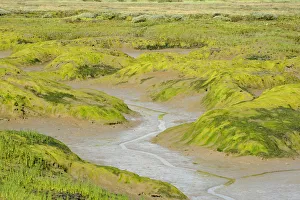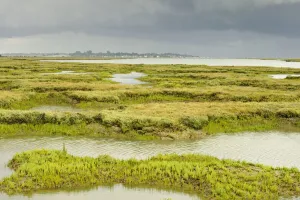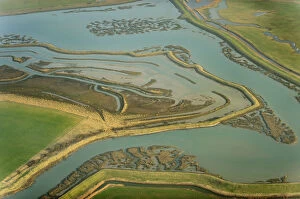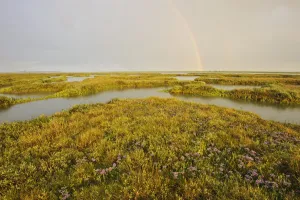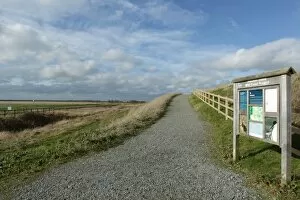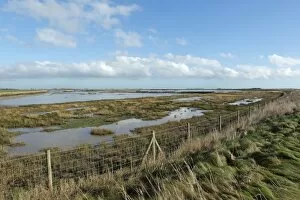Managed Retreat Collection
"Managed Retreat: Protecting Low-Lying Land from Coastal Flooding" As sea levels continue to rise around the world
All Professionally Made to Order for Quick Shipping
"Managed Retreat: Protecting Low-Lying Land from Coastal Flooding" As sea levels continue to rise around the world, many areas of low-lying land face an increasing risk of coastal flooding. The Breach at Alkborough on the Humber Estuary in Eastern England serves as a stark reminder of this pressing issue. With each passing year, it becomes more expensive to protect these vulnerable regions. In response to this challenge, innovative strategies such as they have emerged. This approach involves allowing nature to reclaim certain areas while creating new habitats that can withstand rising tides and provide valuable ecological benefits. One success story is seen in the regenerated saltmarsh habitat surrounding Abbots Hall Farm Nature Reserve. Common glasswort thrives here, offering a glimpse into the resilience of nature when given space to flourish. From above, water channels create mesmerizing patterns across the saltmarsh landscape, showcasing both its beauty and functionality. Coastal realignment has also been implemented at Abbotts Hall Farm in Essex, UK. Remnant saltmarshes serve as reminders of how human intervention can coexist harmoniously with natural processes. As twilight descends upon this serene scene, lights from nearby Bradwell-on-Sea illuminate the horizon—a testament to our interconnectedness with these fragile ecosystems. Within these rejuvenated marshlands lie thriving communities of common sea lavender and sea purslane—hardy plants that have adapted remarkably well to their saline surroundings. Their presence not only adds aesthetic appeal but also contributes significantly to biodiversity conservation efforts. Managed retreat offers hope for a sustainable future amidst climate uncertainty. By embracing nature's regenerative powers and working hand-in-hand with natural processes like tidal movements and sediment deposition, we can strike a delicate balance between protecting our coastlines and preserving precious ecosystems for generations to come. So let us learn from places like Abbotts Hall Farm where water channels carve intricate designs through saltmarshes from above—an aerial reminder that managed retreat is not just a concept but a tangible solution.


